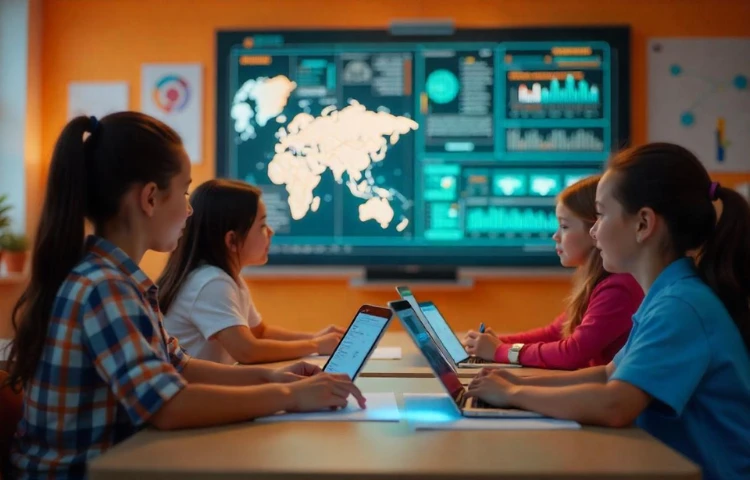

Prefer to listen instead? Here’s the podcast version of this article.
In a landmark move poised to reshape the future of American education, President Donald Trump has signed a groundbreaking executive order aimed at integrating Artificial Intelligence (AI) into K-12 classrooms across the nation. Titled the Advancing Artificial Intelligence Education for American Youth, this initiative signals a bold step forward in preparing students for a workforce increasingly defined by digital and AI-driven technologies. As educators, policymakers, and technologists navigate this pivotal transition, the order lays a foundation for comprehensive AI literacy—starting in the earliest years of schooling. [Education Week]
Establishment of the AI Education Task Force
The order mandates the creation of a White House Task Force on Artificial Intelligence Education. Chaired by the Director of the Office of Science and Technology Policy, the task force includes the Secretaries of Education, Labor, Energy, and Agriculture. Its primary goal is to coordinate federal efforts to promote AI literacy and integration in K-12 education. [The White House]
Prioritization of AI in Federal Education Grants
The Secretary of Education is directed to prioritize AI-related initiatives in discretionary grant programs. This includes funding for teacher training in AI and computer science, ensuring educators are well-equipped to teach AI concepts effectively.
Public-Private Partnerships
The task force is instructed to establish partnerships with private sector entities to provide resources and support for AI education in schools. These collaborations aim to enhance the availability of AI tools and curricula for students and teachers.
Presidential AI Challenge
Within 90 days, the task force will develop plans for a “Presidential Artificial Intelligence Challenge.” This initiative is designed to encourage innovation and engagement in AI among students and educators nationwide.
The executive order represents a significant shift in federal education policy, emphasizing the importance of AI literacy from an early age. By integrating AI into the K-12 curriculum, the administration aims to prepare students for future careers in technology and related fields.
However, the implementation of this initiative poses challenges. Educators will require substantial training to effectively teach AI concepts, and schools may need to invest in new technologies and infrastructure. Additionally, there is a need for clear guidelines to ensure ethical and responsible use of AI in educational settings.
This executive order is part of a broader set of educational reforms introduced by the Trump administration. Other measures include efforts to dismantle diversity, equity, and inclusion (DEI) programs in higher education and changes to school discipline policies. These actions have sparked debate and concern among educators and advocacy groups. [AP News]
President Trump’s executive order on AI education marks a pivotal moment in the integration of technology into the American education system. While the initiative holds promise for preparing students for a digital future, its success will depend on effective implementation, adequate funding, and ongoing support for educators. As schools navigate these changes, collaboration between federal agencies, educators, and the private sector will be crucial to ensure that AI becomes a valuable tool for learning and innovation.
WEBINAR